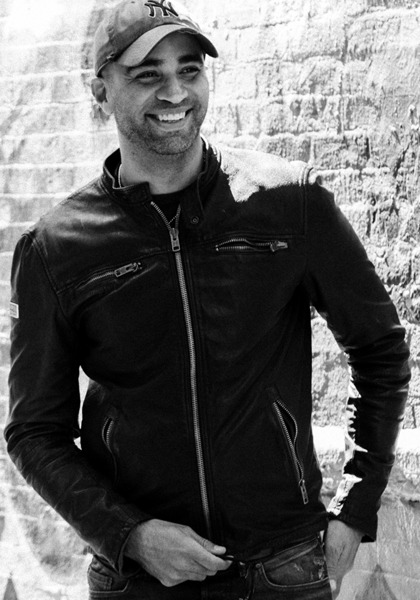Author’s note: Recently I received some feedback from a mentor, that the image we chose for an article I wrote a couple of weeks ago was too racy or suggestive for LinkedIn. That it might offend people who would no longer consider doing business with our agency as a result… Valid or Absurd? I loved the feedback, and it got me thinking about marketing in the time of “playing it safe” and appealing to a society that’s constantly offended or outraged by anything creative, suggestive or mildly controversial. Isn’t that part of the job as marketers to grab peoples’ attention in any otherwise ever moving newsfeed? To stand out? Of course there’s a line, but where is it and who’s the determiner of what’s appropriate and what’s not? Isn’t it our job as marketers to shake things up and grab your attention? Isn’t it our job as marketers to get people talking?
That said, is it true that even bad press is press nonetheless? When does marketing cross the line? Leave your thoughts in the comment section below.
Why is today’s marketing so dull? Wokeness might be to blame… An unspoken question looms over the digital marketing industry today: Should marketers be afraid of a society that seems overly woke, perpetually offended, and constantly outraged? There’s credible evidence that the answer is a solid no. Here’s why:
Walking the fine line between edgy and offensive
Savvy marketers are becoming aware that capitalizing on controversy is an effective way of bumping up brand exposure. In sharp contrast to the “huggy” approach pursued by advocacy marketing, outrage marketing jumps on the woke bandwagon, often piggybacking on headlined news stories.
Deliberately whipping up righteous indignation on all sides, controversial bloopers may well be a brilliant marketing strategy for boosting clicks and unpaid column inches of coverage, especially when followed by suitably humble apologies.
Blunder or brilliance?
Every few weeks, a controversial ad triggers tweetstorms of woke outrage, followed by angry rebuttals, enthusiastic shares and massive free press coverage – all great traffic drivers. These twitter tempests are usually (but not always) followed by abject apologies, placement withdrawals and very occasional resignations.
The upside: outrage marketing is a lot cheaper than traditional advertising campaigns. Just ask Bloomingdale’s, whose apparently tone-deaf support of date rape (“Spike your best friend’s eggnog when they’re not looking!”) might have jacked up sagging sales during the Cosby rape trial.
A similar approach was followed by Bud Light, claiming to be “The perfect beer for removing ‘no’ from your vocabulary for the night.” Stirring up hashtagged flurries of fury that showcased their brands, both these giant corporations groveled suitably low, and then went straight back to business as usual – or even better!
Women Belong In The Kitchen…?
On a recent episode of Real Time With Bill Maher, Larry Wilmore and Scott Galloway joined Bill to discuss Burger King’s “Women belong in the kitchen” ad campaign. It had a lot of people talking – and other companies are taking notice.
Leave your thoughts in the comments below. What do you think of
the Burger King Ad?
Backlash, boycotts and brands
It’s common knowledge that social media users are more likely to share things that make them mad. However, outrage marketers must tiptoe along the tightrope bridging the gap between simply unpopular and profitably viral. The trick is to use these initial reactions to stir up the resentment in a second group, triggering a return round of jeering rebuttals that mock these social justice warriors: Snowflakes! Socialists!
With a little luck, the feud spirals outwards and hits the headlines, as top-of-mind improves and brand recognition soars – proving that even negative publicity can have positive effects. Better still, all this attention-grabbing turbulence needs almost no support from lean advertising budgets.
Weighing the risks
Obviously high-risk, outrage marketing is not a tactic to be deployed blindly or too often. However, shock tactics do indeed sell (ask Howard Stern!)
High-risk outrage marketing requires balancing on a PR tightrope. However, stirring up controversy can be an effective way of standing out from the crowds: while it draws swarms of critics, loyal customers spring to the defense of their favorite brands, hitting the headlines and getting a firmer footing in grassroots culture.
A deftly-worded ‘blunder’ can go global in minutes, thanks to social media echo chambers reverberating 24/7. The trick is to make sure the backspatter is outweighed by the front-end benefits: exposure, brand recognition and (hopefully) more sales.
Breaking cultural boundaries
Every hotspot always has at least two sides (and usually more), each with its fervent supporters. For every marriage equality warrior buying Hubby Hubby ice cream, there’s an ardent believer in traditional matrimony. Win some, lose some – either way, the brand is burnished by the battle!
With this gentle jab, Ben & Jerry’s was an early adopter of wit as an innovative marketing tool. Its success shows that marketers need not always tone down the nuances of their creative campaigns instead simply assuming that consumers are smart enough to read between the lines.
Instant Karma
The blowback can be immediate and long lasting – and that’s the crunch for businesses. When product defects and poor customer services are shared live, that’s tough to handle but fixable. After all, everybody messes up from time to time, right?
But it is precisely the ads that overstep the acceptability line, ‘heedlessly’ trampling hard-won human rights and sensitivities, that are the most memorable. Sony’s savage “White is coming” ad for its PlayStation Portable is still as outrageous today as it was fifteen years ago. And just as unforgettable.

See how Transmyt can drive massive amounts of growth for your business.
-
SEO – Unlock massive amounts of traffic.
-
Content Marketing – Our team creates engaging content that will get shared + attract customers.
-
Paid Media – Effective paid strategies with clear ROI.
-
Website Development – Cutting edge technology platforms.
Social media minefield
As every experienced digital marketing agency knows, companies and their brands are today tip-toeing through a minefield of moral imperatives. Once rated only by their wares, businesses are now being judged for their public stances on crucial issues to the future of society. But that’s a plus for outrage marketing: closer scrutiny fans the flames of controversy even higher.
Worldwide, close to five billion people own cell phones, with this figure still rising rapidly in the less developed nations. Cultural transgressions – like tone-deaf ads – can be snapped, uploaded and shared in seconds, particularly as consumers become more interested in righting old wrongs and protecting new rights.
As these reactions often lead them to ditch brands not aligned with their values and beliefs, the pros and cons of each outrage marketing action should be weighed carefully. Smart marketers will tread lightly here, crafting creative campaigns that push the envelope of acceptability just far enough, expressing outrage through the outrageous with hubris, but honed by humor.
Indeed, laughter is often sorely lacking from digital marketing campaigns, fettered by issue-sensitive corporate cultures. Bedrocking the careers of razor-witted celebrities like Jimmy Fallon and Stephen Colbert, transgressive mockery is a useful tactic that’s been avoided for too long by woke-burned digital marketers.
Are triggers valid marketing tools?
There’s nothing new about outrage marketing. It’s been a valuable (but rarely-used) resource in the campaign toolbox since at least the 1990s, when the United Colors of Benetton campaigns shocked the world (and pumped up sales!) with stark photographs of birth and death, blood and passion.
Although Phineas Barnum famously proclaimed that there’s no such thing as bad publicity, an expert hand is needed to steer outrage marketing campaigns through the quick sands of today’s woke world. Some firms are trying to jump on this bandwagon and spotlight their brands and products through stirring up disputes heedlessly – and sometimes inadvertently! A perfect example is the recent Pepsi ad where Kendall Jenner tried (but failed big-time!) to virtue-signal BLM support through a can of pop.
The blowback was instant and embarrassing, but relatively short-lived and of limited benefit to the Pepsi image. However, this is an excellent object lesson for inventive marketers seeking innovative ways of reaching out to consumers through triggers: just like outrage marketing, effective cause marketing requires far more than merely piggybacking on hot-button issues.
Marketers shouldn’t play safe
Today, there’s really no reason for digital marketers to be so wary of wokeness. Remember, someone is always going to be offended by something. Instead of playing safe (and dull), cutting-edge marketers should pick hot-button issues and address them with click-boosting irreverent humor – and a stack of meme-worthy images ready to go viral, of course!
Want more insights?
Subscribe to our weekly marketing tips and advice, delivered straight to your inbox.
Oops! We could not locate your form.
Keep Reading
Want more? Here are some other blog posts you might be interested in.
The MVP—Minimum Viable Product—has become gospel in startup circles. Build fast, test fast, fail fast. But in today’s crowded market, viability ...
The startup myth goes like this: work 20-hour days, pivot constantly, chase the high of the new. That’s what makes a ...
Most founders build their first leadership teams for speed, comfort, and alignment. Understandably, you’re strapped for time and need people who ...
For founders and growing companies
Get all the tips, stories and resources you didn’t know you needed – straight to your email!




